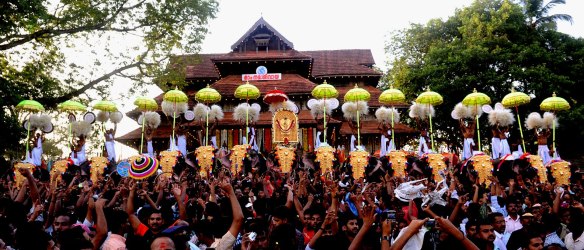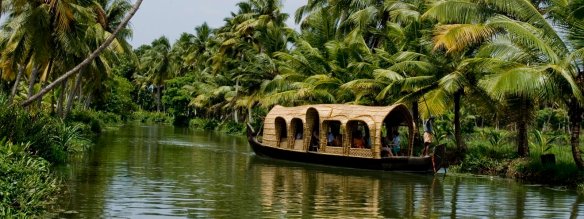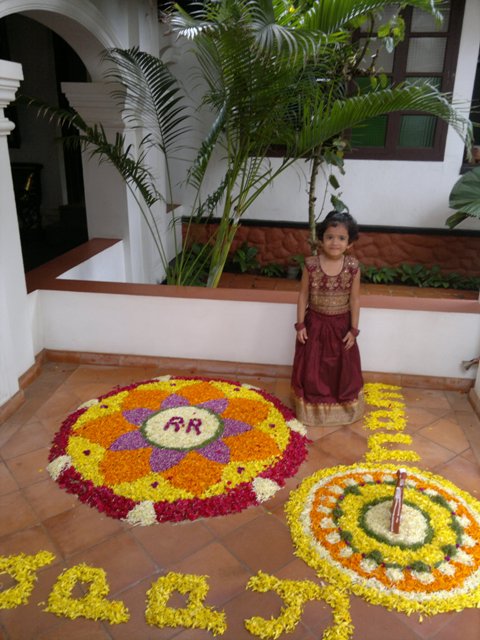
A natural flower display for Onam. Text by RR staff
It’s a very exciting weekend here in Kerala. Onam, a harvest festival, is celebrated all over Kerala regardless of caste & creed during the month of Chingam (01st month of the year in the Malayalam calendar).
In our homes, we Indians (Keralites) have a great feast like westerners have on Christmas day. But the feast is different, as we have all vegetarian dishes rather than turkey. The feast is called ‘Sadhya’, with a variety of about 16 dishes and then to top it all, we have the signature dish – the dessert called ‘payasam’ (3 types) also.
Most of the people (Hindus) go to the temple in the morning. The kids go to pluck flowers from the surrounding areas near their homes and they make a flower carpet (Atthapookalam). Children are very happy because they are the ones that benefit a lot by getting new clothes & gifts.
In Raheem Residency, we also celebrate Onam. The staff make the flower carpet & also a great feast is prepared with a variety of vegetarian dishes & payasam also. All the staff sit together, and enjoys the feast. We include guests too in Chagara Restaurant but there is one golden rule : guests must eat like we do – that is, with no cutlery! We believe that the food tastes better when we quietly use our fingers. Our guests always enjoy the challenge.
So we take this opportunity to wish all our readers a Happy & Prosperous Onam wherever you are in Kerala.
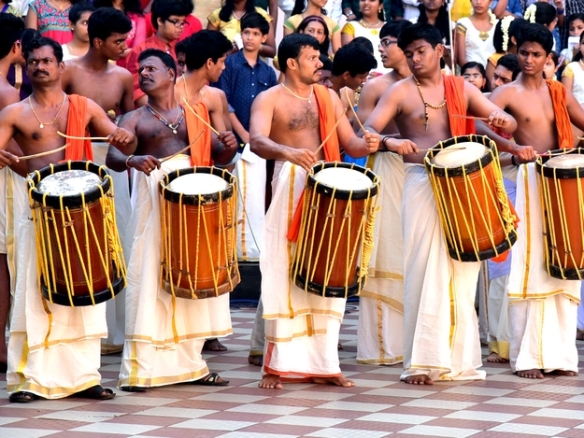


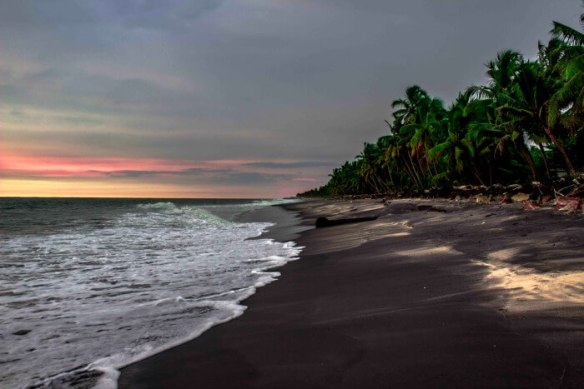


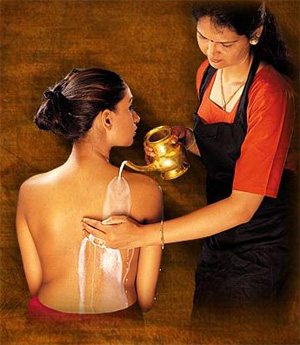
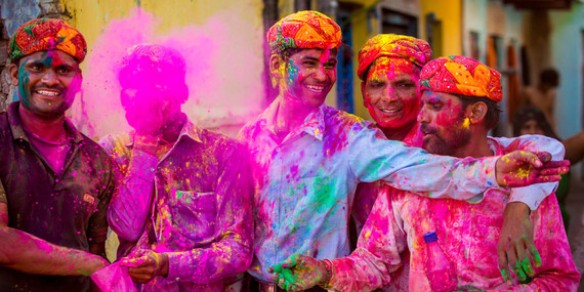 It’s the Festival of Holi this weekend in India. It’s particularly popular in North India and Nepal. Some children in Kerala will also celebrate it but in a more muted fashion. The real pleasure comes from throwing powdered dyes at everyone you meet. No one is spared, not even your boss!
It’s the Festival of Holi this weekend in India. It’s particularly popular in North India and Nepal. Some children in Kerala will also celebrate it but in a more muted fashion. The real pleasure comes from throwing powdered dyes at everyone you meet. No one is spared, not even your boss!